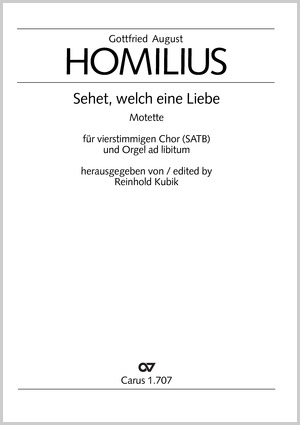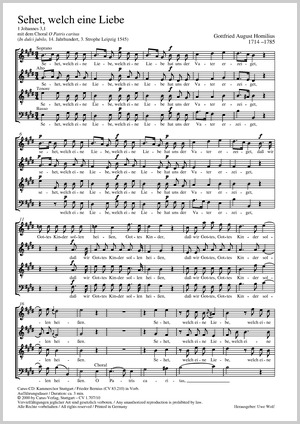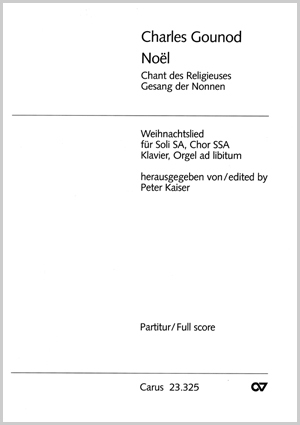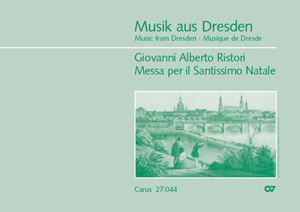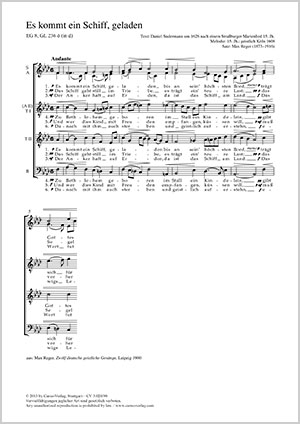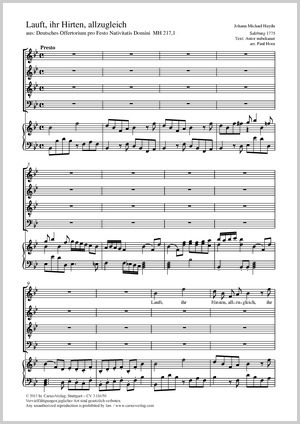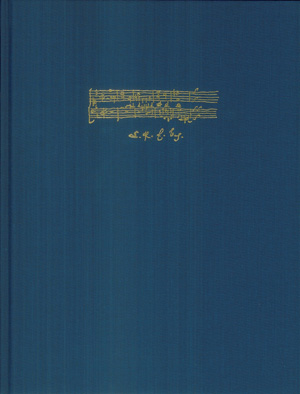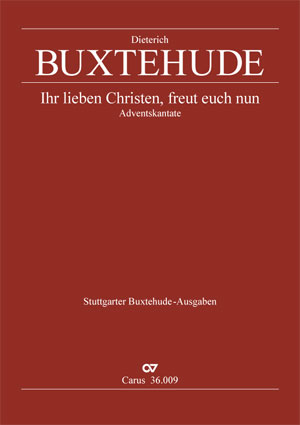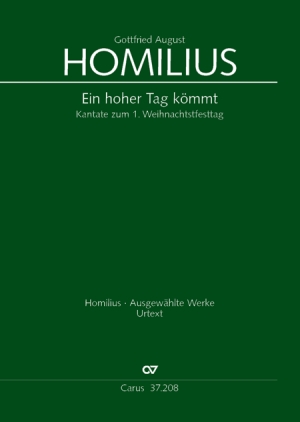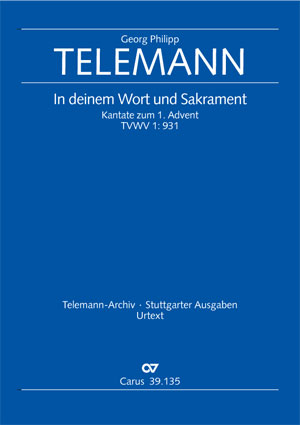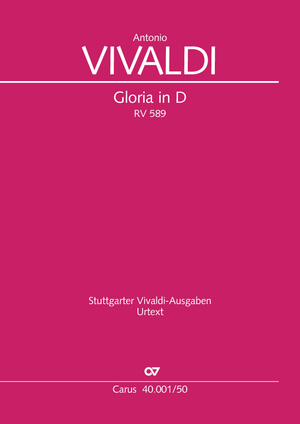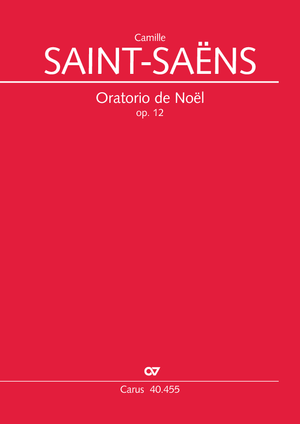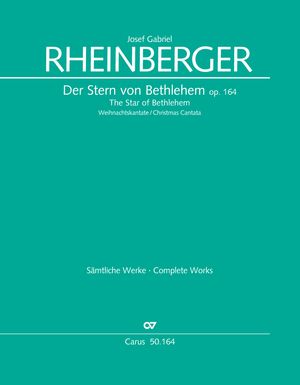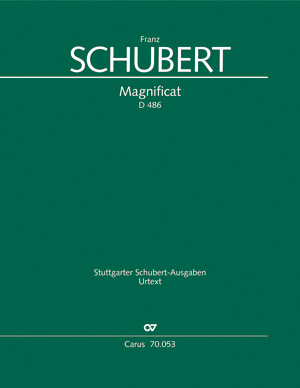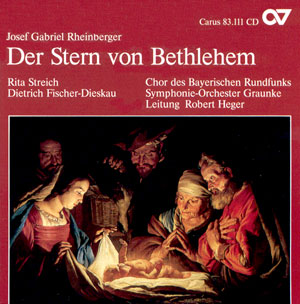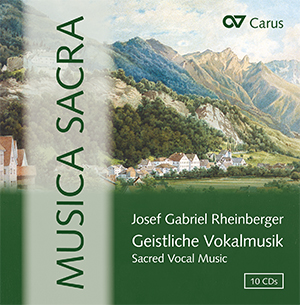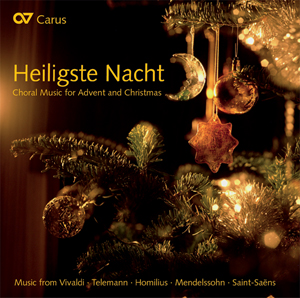
Heiligste Nacht. Choral Music for Advent and Christmas
Contents
-
Choir
Kammerchor Stuttgart
The Kammerchor Stuttgart is regarded as one of the best ensembles of its kind. Over its fifty-year existence, Frieder Bernius has developed the choir into an exceptional ensemble acclaimed by audiences and press alike. This has led to invitations for the choir to perform at all the important European festivals. In Germany the chamber choir performs at festivals and in concert halls in repertoire ranging from the 17th to the 21st century. Frieder Bernius and his ensemble have received numerous accolades for their contribution to new music. The Kammerchor Stuttgart has made over 80 CDs and LPs, numerous of which have been awarded international recording prizes (including the Edison award, Diapason d’or, Gramophone Choice, Classical Internet Award, International Classical Music Award, and German Record Critics’ Award prizes). The International Federation for Choral Music has invited the ensemble to sing at the 1st, 4th and 10th World Symposia on Choral Music in Vienna, Sydney and Seoul. Regular tours of North America and Asia since 1988 and a South America tour reflect the Kammerchor Stuttgart’s international reputation. Since 1984 the top ensemble has also been invited to Israel biennially. Personal details
-
Choir
Vocalensemble Rastatt
Alongside its dedication to a core repertoire of composers such as Monteverdi, Schütz, Bach, Mozart, Haydn, Schumann, and Brahms, the Vocalensemble Rastatt & Les Favorites frequently explore new terrain with premiere performances. On the heels of its successes in national and international choir competitions, the ensemble has taken part in numerous internationally acclaimed CD recordings as well as radio, and television productions for SWR, Radio France, Deutschlandradio Kultur, and Deutschlandfunk. The Vocalensemble Rastatt & Les Favorites have performed in the Festspielhaus Baden-Baden, the Musikfest Bremen, the Kölner Philharmonie, the SWR RheinVokal Festival, the Europäisches Musikfest Stuttgart, the Schwetzinger Festspiele, the Deutschlandradio Kultur Wartburgkonzerte, the Internationale Musiktage im Dom zu Speyer, the Philharmonie in Mulhouse, and the Centre de Musique “Les Dominicains” in Guebwiller, France, among other venues. The flexible choir does not shy away from excursions into the world of opera, having performed Donizetti’s Lucia di Lammermoor and Bellini’s Norma with Edita Gruberova, and Mozart’s Don Giovanni and Così fan tutte with Rolando Villazón. Together with Klaus Maria Brandauer and the Chamber Orchestra of Europe, the choir also performed Mendelssohn’s Sommernachtstraum at the Musikfest Bremen. The ensemble is sponsored by the German state of Baden-Württemberg in co-operation with its “Kunst 2020” program, as well as by its home city of Rastatt. Personal details
-
Choir
Vocal Concert Dresden
The Vocal Concert Dresden, which was founded as “Körnerscher Sing-Verein” by Peter Kopp in 1993, consists largely of graduates of the Dresden Hochschule für Musik and former members of the Dresden Kreuzchor. The chamber choir’s challenging repertoire extends from programs featuring the music of Schütz, Bach, Handel, Haydn, Mendelssohn and Brahms to contemporary compositions, some of which it has premiered. The ensemble’s interpretative insight and, most importantly, the emotional impact of its concerts, have contributed to its reputation for exceptional performances and to its artistic standing. It is constantly credited with stylistic assurance and an elegant, natural approach to music-making. The choir has appeared in a number of concerts staged by the Dresden Staatskapelle and the Dresden Philharmonic. It has made guest appearances at Bachwoche Ansbach, the Göttinger Händel-Festspielen, the Schlossfestspiele Potsdam, the Händel-Festspielen Halle, the Ravello Festival (Italy), in Poland and Holland, and also repeatedly in the USA. A prominent feature of its programs is music of the late 18th century, for which the Vocal Concert Dresden has developed a particular affinity. Personal details
-
Ensemble
Württembergisches Kammerorchester Heilbronn
-
Ensemble
Chor des Bayerischen Rundfunks
-
Ensemble
Symphonie-Orchester Graunke
-
Ensemble
Orpheus Orchester Wien
-
Ensemble
Wiener Kammerchor
-
Ensemble
NDR Chor Hamburg
Ever since the NDR Choir came into existence in 1946, it has been committed not only to the classical and romantic repertoire but also to contemporary music, which had been banned for a considerable period prior to the choir’s establishment. As a result, the preparation and performance of Schönberg’s unfinished opera Moses und Aron was the focus of worldwide attention in the post-war years. Especially under the direction of Helmut Franz, Max Thurn’s successor, a-cappella literature became a special trade- mark of the choir, a tradition maintained by subsequent conductors such as Roland Bader, Horst Neumann, Robin Gritton and Hans-Christoph Rademann. The choir has also enjoyed the stimulus of working with notable guest conductors such as Eric Ericson, Marcus Creed, Michael Gläser and Rupert Huber. Since the 2008/09 season, Philipp Ahmann has been choral director of the NDR Choir. Among the highpoints of recent years have been performances of Handel’s Israel in Egypt, the Ligeti Requiem and Schönberg’s Gurrelieder. Of the choir’s many CD recordings, the a-cappella works by Max Reger (dir. by H.-Chr. Rademann), which received the 2005 “Prize of the German Record Critics,” deserves special mention. Plans for the 2009/2010 season include Haydn’s The Creation under Martin Haselböck and a concert performance of Bizet’s opera Carmen as well as the choir’s own subscription series under the direction of Philipp Ahmann. Personal details
-
Ensemble
Estonian Philharmonic Chamber Choir
-
Ensemble
Tallinn Chamber Orchestra
-
Ensemble
Les Favorites
Alongside its dedication to a core repertoire of composers such as Monteverdi, Schütz, Bach, Mozart, Haydn, Schumann, and Brahms, the Vocalensemble Rastatt & Les Favorites frequently explore new terrain with premiere performances. On the heels of its successes in national and international choir competitions, the ensemble has taken part in numerous internationally acclaimed CD recordings as well as radio, and television productions for SWR, Radio France, Deutschlandradio Kultur, and Deutschlandfunk. The Vocalensemble Rastatt & Les Favorites have performed in the Festspielhaus Baden-Baden, the Musikfest Bremen, the Kölner Philharmonie, the SWR RheinVokal Festival, the Europäisches Musikfest Stuttgart, the Schwetzinger Festspiele, the Deutschlandradio Kultur Wartburgkonzerte, the Internationale Musiktage im Dom zu Speyer, the Philharmonie in Mulhouse, and the Centre de Musique “Les Dominicains” in Guebwiller, France, among other venues. The flexible choir does not shy away from excursions into the world of opera, having performed Donizetti’s Lucia di Lammermoor and Bellini’s Norma with Edita Gruberova, and Mozart’s Don Giovanni and Così fan tutte with Rolando Villazón. Together with Klaus Maria Brandauer and the Chamber Orchestra of Europe, the choir also performed Mendelssohn’s Sommernachtstraum at the Musikfest Bremen. The ensemble is sponsored by the German state of Baden-Württemberg in co-operation with its “Kunst 2020” program, as well as by its home city of Rastatt. Personal details
-
Ensemble
Dresdner Instrumental-Concert
Since 1995 the Dresdner Instrumental-Concert has brought together artists who perform music true to historical style on period instruments. The name of the group originated from middle class musical life as it existed in Dresden around 1800. Numerous concerts and recordings – especially together with the Vocal Concert Dresden under the direction of Peter Kopp – display an impressive artistic quality. The primary emphasis of its repertoire lies in the treasures of Dresden’s rich musical history. The Dresdner Instrumental-Concert has been acclaimed in the international press and by the public for its sensitive sonority and its tasteful manner of playing. Personal details
-
Ensemble
Kammerchor "I Vocalisti"
Depending on the project, the chamber choir I Vocalisti consists of 20 to 60 vocally and musically trained singers from Northern Germany, who come together to perform challenging sacred and secular choral music at a professional level. Since its founding in 1991, the ensemble has performed in numerous concert series and has received prizes at national and international choral competitions, including 1st Prize at the 6th German Choir Competition in 2002 and 1st Prizes at the international choral contests in Tolosa, Spain in 2004, and in Cork, Ireland in 2009. In addition, I Vocalisti has recorded numerous works for radio, television and CD productions. The ensemble performs at major festivals, including the Schleswig-Holstein Musik Festival and the Festival des Choeurs lauréats. Furthermore, the choir regularly expands its musical spectrum by working in crossover projects with such groups as the Klazz Brothers and the Danish world music band Afenginn. As a guest choir for master classes, I Vocalisti has worked with directors such as Volker Hempfling, Frieder Bernius and Malcolm Goldring. The ensemble is also distinguished by its work with various composers and conductors such as U?is Prauli?š, Eric Whitacre, Ola Gjeilo and Christoph Eschenbach. Personal details
-
Ensemble
Ensemble 94
The Ensemble 94 was founded by Kay Johannsen in 1994 to participate in musical activities in the Stiftskirche (collegiate church) in Stuttgart, but since then it has also performed in many independent orchestral projects. Its members come from Germany, Holland, Belgium, Italy and Switzerland, and they are widely experienced as soloists and in chamber music. An uncommon feature of the ensemble is the fact that the players have the ability to play either baroque or modern instruments, in accordance with the stylistic epoch of the music being performed. The concert master of the ensemble is Christine Busch, Professor of violin at the Stuttgart Conservatory. According to the Stuttgarter Nachrichten, this ensemble is characterized by “boundless zest for music making” as well as “subtile dynamic” and “joy in articulatory detail.” The Stuttgarter Zeitung stated “soloists performing with verve, elegance and stylistic sensitivity” and found that the group “need not shun comparison with the best Baroque orchestras.” The Württembergische Blätter für Kirchenmusik wrote about the Telemann-CD “In the accompaniment by Ensemble 94, founded by Johannsen in 1994, the singers were provided with an appropriate ensemble of exquisite articulation, at all times subservient to the vocal line, which left nothing to be desired.” Personal details
-
Orchestra
Barockorchester Stuttgart
The Barockorchester Stuttgart, which was founded by Bernius in 1985, specializes in 18th century music. The musicians are among the leading representatives of historical performance practice and perform exclusively on original instruments. The ensemble dedicates itself to a large extent to the revival of 18th century operas. It has performed at numerous international festivals, among others in Rome, Dresden and Göttingen. Personal details
-
Conductor
Frieder Bernius
| 1947Frieder Bernius’s work has earned great worldwide recognition. He is in demand internationally as a conductor and as a teacher. His principal artistic collaborators are the ensembles he founded himself, the Kammerchor Stuttgart, the Barockorchester Stuttgart, the Hofkapelle Stuttgart and the Klassische Philharmonie Stuttgart. As a guest conductor, he has collaborated repeatedly with, for example, the SWR Vokalensemble Stuttgart, the Deutsche Kammerphilharmonie Bremen, the Stuttgarter Kammerorchester and the Streicherakademie Bozen. Great stylistic versatility is Frieder Bernius’s hallmark. Whether he conducts vocal works by Monteverdi, Bach, Händel, Mozart, Beethoven, Fauré and Ligeti, stage music by Mendelssohn or symphonies by Haydn, Burgmüller and Schubert, his work always aims for a sound that is at once unmistakably personal and at the same time oriented towards the original period sound ideal. He devotes himself equally to the rediscovery of 18th century operas and to first performances of contemporary compositions. He is particularly interested in the musical history of southwestern Germany. Carus-Verlag has awarded Frieder Bernius a Golden CD for his complete recording of the sacred music of Felix Mendelssohn Bartholdy. The award was presented to him during the German Choir Festival in Stuttgart 2016. The sale of over 250,000 recordings, which has been acclaimed with a number of awards, has made a not insignificant contribution to what today is the obvious presence of Mendelssohn's complete œuvre in the concert repertoire. Personal details
-
Conductor
Robert Heger
-
Conductor
Johannes Prinz
-
Conductor
Hans-Christoph Rademann
| 1965Conductor Hans-Christoph Rademann is an immensely versatile artist with a broad repertoire who devotes himself with equal passion and expertise both to the performance and rediscovery of early music and to the first performances and cultivation of Contemporary Music. Born in Dresden and raised in the Erzgebirge mountains, he was influenced at an early age by the great Central German kantorial and musical tradition. He was a student at the traditional Kreuzgymnasium, a member of the famous Kreuzchor, and studied choral and orchestral conducting at the Carl Maria von Weber University of Music in Dresden. During his studies, he founded the Dresdner Kammerchor and formed it into a top international choir which is still under his direction today. Since 2013, Hans-Christoph Rademann has been the academy director of the International Bach Academy Stuttgart. He regularly collaborates with leading choirs and ensembles of the international music scene. From 1999 to 2004 he was chief conductor of the NDR Choir and from 2007 to 2015 chief conductor of the RIAS Chamber Choir. Guest conducting engagements have led and continue to lead him to the Nederlandse Bachvereniging, the Collegium Vocale Gent, the Akademie für Alte Musik, the Freiburger Barockorchester, the Deutsche Radiophilharmonie Saarbrücken Kaiserslautern, the Sinfonieorchester Basel, the Orchestre Philharmonique de Luxembourg, among others. Hans-Christoph Rademann has been awarded prizes and honors for his artistic work, including the Johann Walter Plaque of the Saxon Music Council (2014), the Saxon Constitutional Medal (2008), the Sponsorship Prize as well as the Art Prize of the state capital Dresden (1994 and 2014 respectively). He received the Preis der Deutschen Schallplattenkritik several times for his numerous CD recordings (most recently in 2016), as well as the Grand Prix du Disque (2002), the Diapason d’Or (2006 & 2011), the CHOC de l’année 2011 and the Best Baroque Vocal Award 2014. In 2016 he was awarded the European Church Music Prize of the city of Schwäbisch Gmünd. His exemplary interpretation and recording of the complete works of Heinrich Schütz with the Dresdner Kammerchor in the Stuttgart Carus-Verlag, which was completed in 2019, was awarded the newly endowed Heinrich Schütz Prize as well as the OPUS KLASSIK 2020 in the same year. Hans-Christoph Rademann is professor of choral conducting at the Carl Maria von Weber University of Music in Dresden. He is also artistic director of the Musikfest Erzgebirge, ambassador of the Erzgebirge and patron of the Christian Hospice Service Dresden. Personal details
-
Conductor
Holger Speck
Holger Speck is founder and artistic director of the Vocalensemble Rastatt & Les Favorites. He has developed a distinguished international reputation as a charismatic musician who is capable of bringing to life the aesthetic details of the sound particular to different periods, while communicating emotive content to the listener. His keen sense of sound assures the unmistakable tonal quality of his ensembles. His compelling, lively, and profound interpretations are regularly praised in specialist publications. He has conducted at famous festivals and concert halls such as the Festspielhaus Baden-Baden, the Philharmonie Mulhouse, the Händelfestspiele Karlsruhe, the Europäische Musikfest Stuttgart, the Schwetzinger Festspiele, the Festival Europäische Kirchenmusik Schwäbisch Gmünd, and the SWR RheinVokal Festival. Holger Speck has won prizes at both national and international competitions with the Vocalensemble Rastatt. His CD recordings have met with international acclaim (Gramophone Magazine, American Record Guide, Fanfare, Fono Forum, L’Orfeo, Pizzicato, Diapason, Classicstoday etc.). He frequently collaborates with artists such as Anne Le Bozec (Piano), Reinhold Friedrich (Trumpet), Wolfgang Meyer (Clarinet), and Veronika Skuplik (Violin). Holger Speck is also in demand as a singer, as a guest conductor, and as a lecturer at seminars for conducting and interpretation. He teaches at the Hochschule für Musik in Karlsruhe. Personal details
-
Conductor
Tonu Kaljuste
For twenty years Tõnu Kaljuste (conductor) was artistic director and principal conductor of the Estonian Philharmonic Chamber Choir, which he founded in 1981, and the Tallinn Chamber Orchestra. Kaljuste has also been chief conductor of the Swedish Radio Choir and the Netherlands Chamber Choir. He has directed international choral seminars and workshops for several years and has worked as a guest conductor with leading orchestras and choirs throughout Europe, Australia and America. As well as immersing himself in the music of the great northern and eastern European moderns, such as Schnittke, Kurtag, Penderecki, Rautavaara and Kancheli, he has a deep affinity with the composers of his native Estonia, including Pärt, Tüür, Tormis and Eller. He has established an international reputation with his wide-ranging repertoire from opera, via the traditional symphonic repertoire to contemporary music. His numerous recordings have won many awards and have been nominated for Grammy awards. In 1999 he received the Cannes Classical Award in the category “Best 20th Century Choral Music” for his recording of Alfred Schnittke’s Psalms of Repentance. In 2004 he was awarded first prize by the Estonian State Foundation “Kultuurkapital.” The same year he became artistic director of the Nargen Festival, an annual, three-month long musical event on the coast of Estonia. He is a member of the Royal Swedish Academy of Music. Personal details
-
Conductor
Kay Johannsen
| 1961
-
Conductor
Peter Kopp
After singing in the Dresden Kreuzchor as a schoolboy, Peter Kopp trained both as a church musician and as a choral and orchestral conductor at the Dresden Hochschule für Musik. While still a student he directed the Dresden Bach Choir. Since 1995 he has been a choral conductor of the Dresden Kreuzchor, which he was engaged to direct when the post of Kreuzkantor was vacant. His diverse musical activities have taken him abroad on a number of occasions. He is particularly interested in rediscovering forgotten gems from Saxony’s musical history. In this respect, performances and CD recordings of works by Johann Gottlieb Naumann have had the same lasting resonance as his most recent releases, “Christmas at the Dresden Court” (Carus 83.169), “Christmas in the Dresden Frauenkirche” (Carus 83.170), and the first recording of the most important Vivaldi discovery for seventy years, the Dixit Dominus. In 2002 Peter Kopp was awarded the Johann Walter Plaquette of the Saxon Music Council, followed by the Sponsor Prize of Dresden, the state capital of Saxony, in the spring of 2003. In addition he regularly appears as a guest conductor with the Bach Society of Houston/Texas and has given courses in choral conducting at two universities there. Personal details
-
Conductor
Hans-Joachim Lustig
Hans-Joachim Lustig is the founder and director of I Vocalisti. After completing his degree in Music Education, he has spent his career working as a freelance director and conductor in Lübeck, Germany. In 1994/95 he was the recipient of a fellowship awarded by the Deutsche Musikrat (German Music Council). He conducts seminars for choirs and choral directors both nationally and internationally. Lustig is also artistic director of the successful German boys’ choir, the Chorknaben Uetersen, whose male voices won 1st Prize at the 6th German Choir Competition in 2002. In addition, he is a sought-after adjudicator at choral competitions and frequently serves as a guest conductor for various choirs, including the Belgrade Radio Television Choir, the Philharmonia Chorus in London and the Ankara State Choir. Personal details
-
Soloist - organ
Kay Johannsen
| 1961
Reviews
„Heiligste Nacht” displays a high level of quality. Every track is well balanced and unified … „Heiligste Nacht” provides many trustwor-thy recordings of a variety of pieces. Because it contains many less known pieces and beloved classics, this CD would be a useful reference tool for programming a Christmas concert or recording.
(John C. Hughes, Choral Journal, August 2012)
… keine der üblichen „Weihnachts-Hitparaden” …, sondern ein Programm für ein ausgesprochen audiophiles Publikum, das einerseits neugierig ist auf Entdeckungen in Repertoirenischen, andererseits keine Kompromisse in puncto Qualität eingehen will. So erwartet den Hörer eine … Zeitreise durch die anspruchsvollere weihnachtliche Musik der zurück liegenden 350 Jahre …
(Michael Klein, Glaube und Heimat - Mitteldeutsche Kirchenzeitung, 1. Januar 2012)
… Die erfreuliche Programmauswahl zeigt sich unter anderem darin, dass man nicht fortwährend das Gefühl hat, hier wieder nur die immer gleichen Klassiker der Weihnachtszeit neu aufgekocht zu bekommen. Stattdessen lernt man als interessierter Hörer das ein oder andere Schmankerl kennen, das neugierig auf mehr macht. …”
(Christiane Bayer, klassik.com, 01. Dezember 2011)
Frequent questions about this work
 There are no questions and answers available so far or you were unable to find an answer to your specific question about this work? Then click here and send your specific questions to our Customer Services!
There are no questions and answers available so far or you were unable to find an answer to your specific question about this work? Then click here and send your specific questions to our Customer Services!






